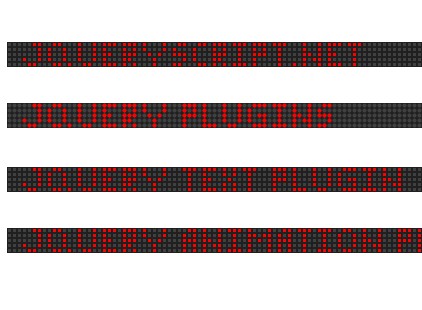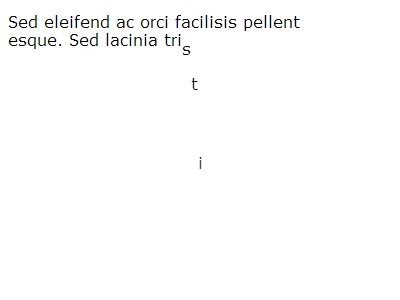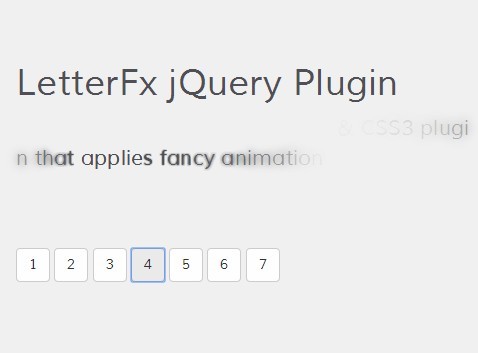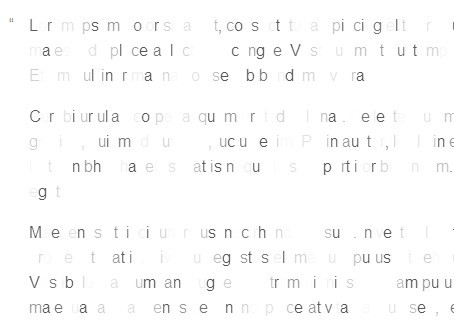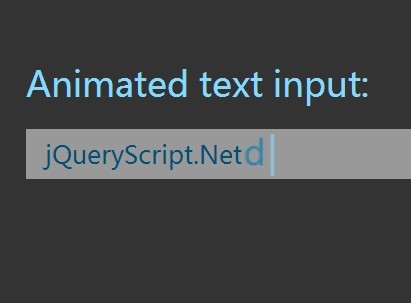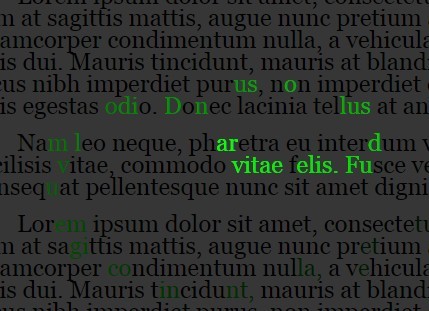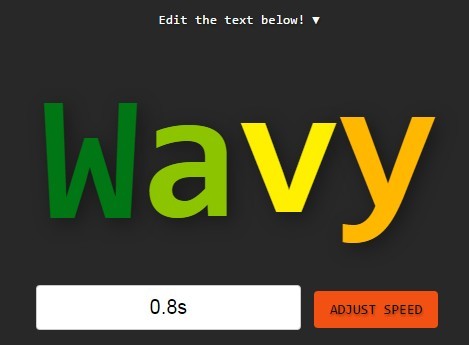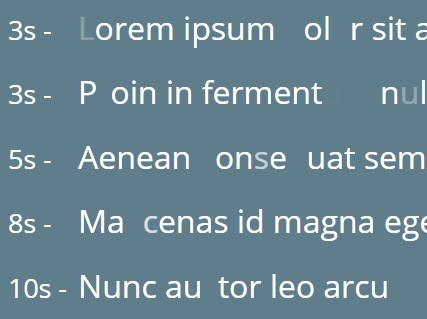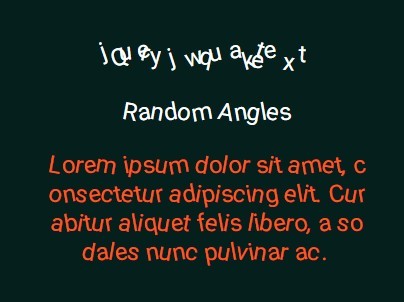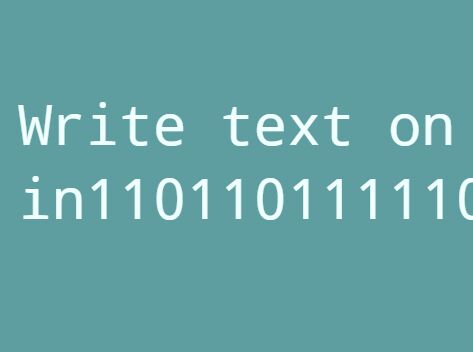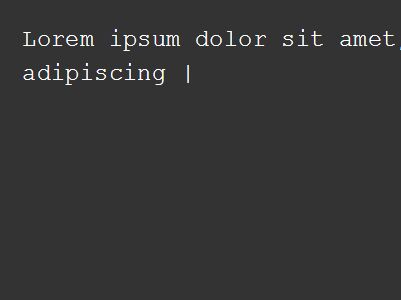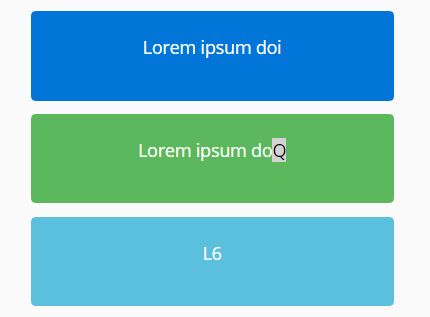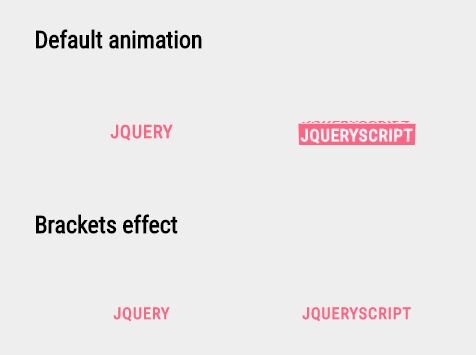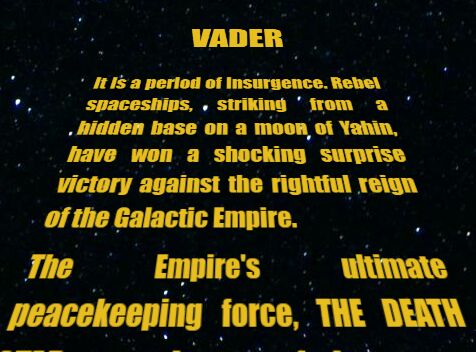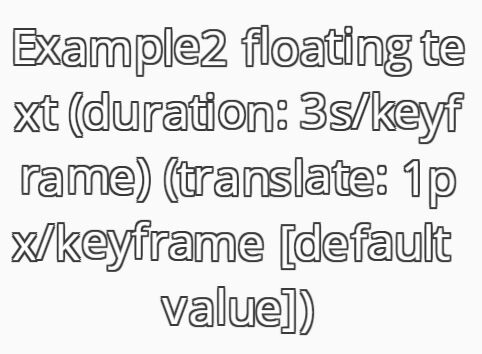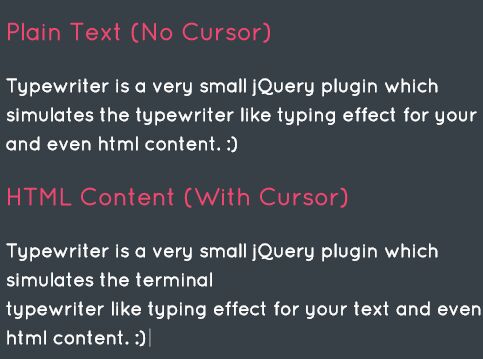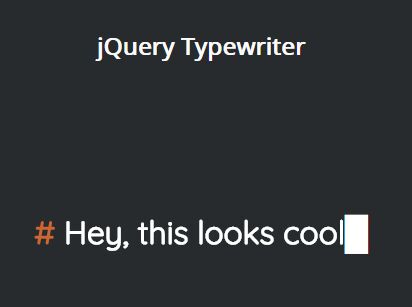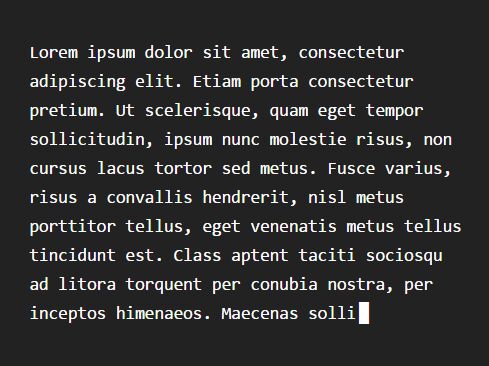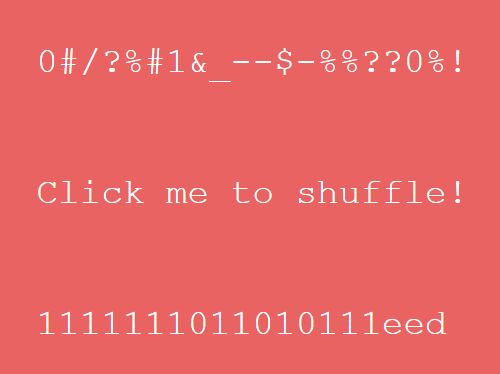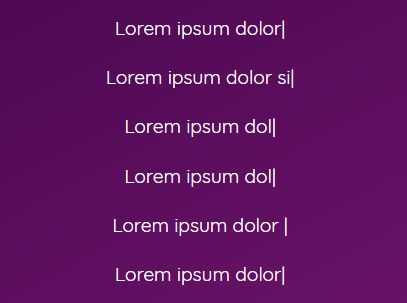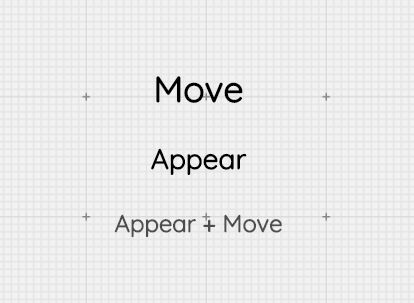CSS animation event
A very small (approx 800 bytes minified and gzipped) cross browser compatible library to handle CSS3 animation and transition DOM events with a fall back pattern for unsupported browsers.
Tested successfully with CSS animation/transition supported browsers of:
- Google Chrome
- Mozilla Firefox
- Opera (12.10+)
- IE10+
Library supports Internet Explorer IE9 and above, a final version with IE8 support is tagged here.
- Why?
- Usage
- Example
- Methods
- onAnimationEnd(element,handler[,data])
- cancelAnimationEnd(element)
- onTransitionEnd(element,handler[,data])
- cancelTransitionEnd(element)
- animationSupport()
- transitionSupport()
- addAnimation{Start|Iteration|End}(element,handler)
- removeAnimation{Start|Iteration|End}(element,handler)
- addTransitionEnd(element,handler)
- removeTransitionEnd(element,handler)
Why?
The CSS3 animation and transition modules both provide useful DOM events which can be used to track the current state of an animation or transition - extremely useful for chaining future application logic as they progress and complete.
Whilst support for these events is (thankfully) provided in virtually every browser that offers CSS animations and transitions, as a front-end developer you are still left with the issue of coding alternative program flows where support isn't available and therefore won't fire your animation/transition event handlers.
Consider the following example:
#movethis { /* leaving out browser prefixes for brevity */ height: 100px; transition: height 1.5s ease-in; } #movethis.nowmove { height: 300px; }// determineCSSTransitionSupport() would determine if browser supports CSS transitions var supportCSSTransitions = determineCSSTransitionSupport(); // move our element var moveThisEl = document.getElementById('movethis'); moveThisEl.className += ' nowmove'; // code around no transition support if (supportCSSTransitions) { moveThisEl.addEventListener('transitionend',nextUIStep,false); } else { nextUIStep(); } function nextUIStep() { // the transition ended, keep going }Having to continually make the decision to utilise DOM animation/transition events vs. a graceful fallback (via supportCSSTransitions in example above) throughout your UI code soon becomes clumsy and error prone.
Usage
CSSAnimEvent manages the above situation in a different way, relying on the fact that CSS transitions by design fall back gracefully with unsupported browsers handling element CSS property changes as instant, with a zero transition time.
Methods onAnimationEnd(element,handler) and onTransitionEnd(element,handler) simply mimic this behaviour by instantaneously calling the given handler for browsers that don't provide animation and/or transition support.
Rewriting the above JavaScript example we can now do:
// move our element var moveThisEl = document.getElementById('movethis'); moveThisEl.className += ' nowmove'; // Browsers supporting CSS transitions will call nextUIStep() after the transition ends // ...otherwise it will be called as window.setTimeout(nextUIStep) CSSAnimEvent.onTransitionEnd(moveThisEl,nextUIStep); function nextUIStep() { // the transition ended, keep going }One caveat to be aware of, both onAnimationEnd() and onTransitionEnd() create 'one shot' event handlers and should be called just after CSS updates have been applied to the element, allowing instant delegation back to the given callback handler for unsupported browsers.
Internally CSSAnimEvent attaches singular animationend and transitionend event handlers to the <html/> element and delegates to given callbacks as required.
Using CSS animation/@keyframes is slightly more work since animated elements will never reach their intended keyframe target within unsupported browsers, but a little CSS/JavaScript can handle this situation:
@keyframes myanimation { /* prior animation steps in here */ 100% { background: #f00; height: 300px; } } #movethis { height: 100px; } #movethis.nowmove { animation: myanimation 1s linear 1 forwards; } #movethis.finish { /* faux the target of myanimation for older browsers */ background: #f00; height: 300px; }// move our element var moveThisEl = document.getElementById('movethis'); moveThisEl.className += ' nowmove'; CSSAnimEvent.onAnimationEnd(moveThisEl,nextUIStep); function nextUIStep(el) { // faux the animation target, by adding 'finish' class to element el.className += ' finish'; // keep going }Example
View a very basic example of this in action using animation and transition chaining.
For capable browsers the tweens will run as expected - alternatively the DOM elements will update instantly from start to finish, via the same event handler execution flow.
As a small bonus, CSSAnimEvent also adds a handy CSS styling hook; cssanimactive, which can be used for specific styling which is applied only during the animation/transition period.
<!-- our element before onAnimationEnd()/onTransitionEnd() --> <div id="movethis" class="movethis-basestyle"> <!-- our element after onAnimationEnd()/onTransitionEnd() called --> <div id="movethis" class="movethis-basestyle cssanimactive"> <!-- and finally, once the animation/transition ends --> <div id="movethis" class="movethis-basestyle">The example uses this CSS styling hook to provide a red border to each box during it's animation/transition period.
Methods
All methods are under a window.CSSAnimEvent namespace.
onAnimationEnd(element,handler[,data])
- Adds a 'one shot' event handler to the given DOM
element, withhandlerexecuting either uponanimationendor instantaneously if CSS animation support not detected. - The
handlerwill be passedelementthat fired the event and an optionaldatapayload as a second parameter. - The given DOM element will be decorated with a CSS class
cssanimactive, removed upon animation completion which can be used as a CSS styling hook.
cancelAnimationEnd(element)
Cancel a 'one shot' event handler set by onAnimationEnd() on the given DOM element.
onTransitionEnd(element,handler[,data])
- Adds a 'one shot' event handler to the given DOM
element, withhandlerexecuting either upontransitionendor instantaneously if CSS transition support not detected. - The
handlerwill be passedelementthat fired the event and an optionaldatapayload as a second parameter. - The given DOM element will be decorated with a CSS class
cssanimactive, removed upon transition completion which can be used as a CSS styling hook.
cancelTransitionEnd(element)
Cancel a 'one shot' event handler set by onTransitionEnd() on the given DOM element.
animationSupport()
Returns true if CSS animation support is detected.
transitionSupport()
Returns true if CSS transition support is detected.
addAnimation{Start|Iteration|End}(element,handler)
- Add
animation{start|iteration|end}native event handlers to DOM elements. - Provides a handy cross browser wrapper having done browser detection for you. Does not provide faux event firing for non-supported browsers.
- Returns
truewhere supported,falseotherwise.
removeAnimation{Start|Iteration|End}(element,handler)
- Remove
animation{start|iteration|end}native event handlers for above. - Returns
truewhere supported, otherwisefalse.
addTransitionEnd(element,handler)
- Add
transitionendnative event handlers to DOM elements. - Provides a handy cross browser wrapper having done browser detection for you. Does not provide faux event firing for non-supported browsers.
- Returns
trueon success/support,falseotherwise.
removeTransitionEnd(element,handler)
- Remove
transitionendnative event handlers for above. - Returns
truewhere supported, otherwisefalse.

